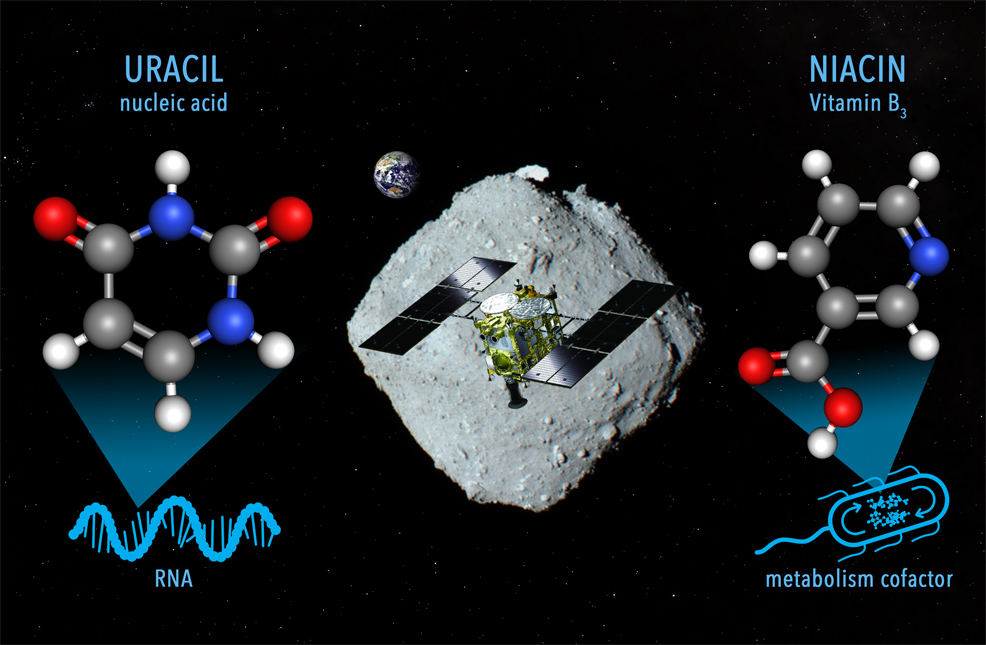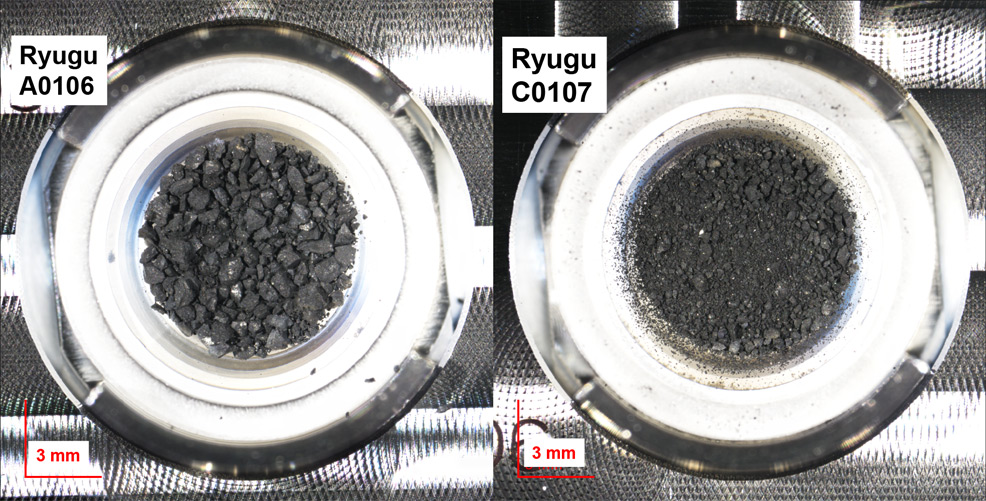
23rd March 2023 RNA component found in asteroid sample Analysis of samples from the near-Earth asteroid Ryugu has revealed the presence of nitrogenous organic compounds, which are important in the development of life.
Japan's space agency (JAXA) launched the Hayabusa2 mission in 2014. After a four year journey, it arrived at 162173 Ryugu – a kilometre-sized object in the Apollo class of asteroids – in 2018. It captured the first ever video from the surface of an asteroid and obtained samples that it returned to Earth. Researchers have now published a detailed study of the materials gathered from Ryugu. They report the presence of uracil – one of the informational units that make up RNA, the molecules that contain instructions for how to build living organisms. Nicotinic acid, also known as Vitamin B3 or niacin, which is an important cofactor for metabolism in living organisms, is also confirmed in the same samples. This discovery, led by Associate Professor Yasuhiro Oba at Hokkaido University in Japan, adds to the evidence that important building blocks for life are created in space and could have been delivered to Earth by meteorites. "Scientists have previously found nucleobases and vitamins in certain carbon-rich meteorites, but there was always the question of contamination by exposure to the Earth's environment," explained Oba. "Since the Hayabusa2 spacecraft collected two samples directly from asteroid Ryugu and delivered them to Earth in sealed capsules, contamination can be ruled out."
The researchers extracted these molecules by soaking the Ryugu particles in hot water, followed by analyses using liquid chromatography coupled with high-resolution mass spectrometry. This revealed the presence of uracil and nicotinic acid, as well as other nitrogen-containing organic compounds. "We found uracil in the samples in small amounts, in the range of 6–32 parts per billion (ppb), while vitamin B3 was more abundant, in the range of 49–99 ppb," Oba elaborated. "Other biological molecules were found in the sample as well, including a selection of amino acids, amines and carboxylic acids, which are found in proteins and metabolism, respectively." The team hypothesises that the difference in concentrations in the two samples, collected from different locations on Ryugu, is likely due to exposure to the extreme environments of space. They also believe that the nitrogen-containing compounds were, at least in part, formed from the simpler molecules such as ammonia, formaldehyde and hydrogen cyanide. While these were not detected in the Ryugu samples, they are known to be present in cometary ice – and Ryugu could have originated as a comet or another parent body which had been present in low-temperature environments. "The discovery of uracil in the samples from Ryugu lends strength to current theories regarding the source of nucleobases in the early Earth," Oba concludes. "The OSIRIS-REx mission by NASA will be returning samples from asteroid Bennu this year, and a comparative study of the composition of these asteroids will provide further data to build on these theories." The Hayabusa2 mission has now been extended through at least 2031, when it will rendezvous with a small, rapidly-rotating asteroid called 1998 KY26.
Comments »
If you enjoyed this article, please consider sharing it:
|








